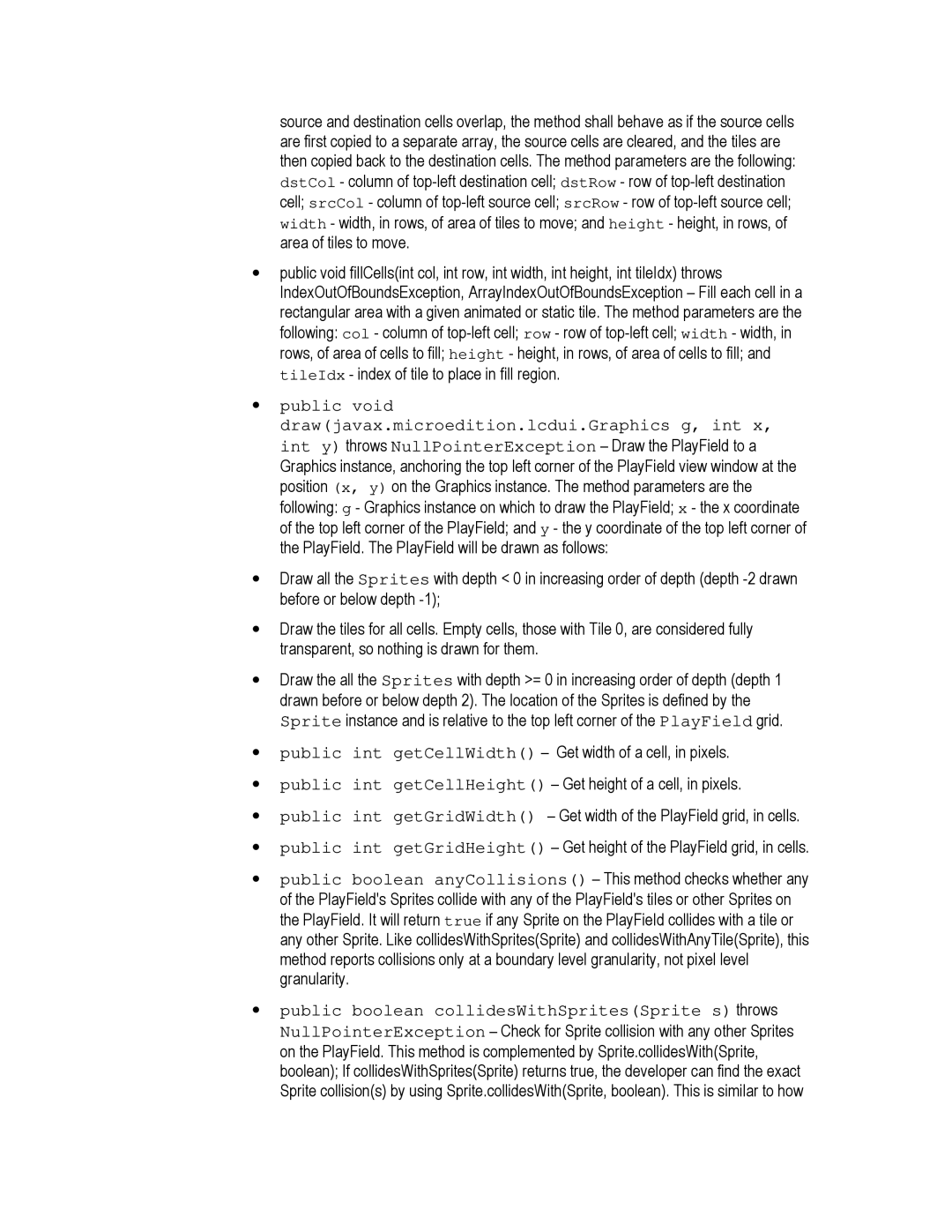source and destination cells overlap, the method shall behave as if the source cells are first copied to a separate array, the source cells are cleared, and the tiles are then copied back to the destination cells. The method parameters are the following: dstCol - column of
•public void fillCells(int col, int row, int width, int height, int tileIdx) throws IndexOutOfBoundsException, ArrayIndexOutOfBoundsException – Fill each cell in a rectangular area with a given animated or static tile. The method parameters are the following: col - column of
•public void
draw(javax.microedition.lcdui.Graphics g, int x, int y) throws NullPointerException – Draw the PlayField to a Graphics instance, anchoring the top left corner of the PlayField view window at the position (x, y) on the Graphics instance. The method parameters are the following: g - Graphics instance on which to draw the PlayField; x - the x coordinate of the top left corner of the PlayField; and y - the y coordinate of the top left corner of the PlayField. The PlayField will be drawn as follows:
•Draw all the Sprites with depth < 0 in increasing order of depth (depth
•Draw the tiles for all cells. Empty cells, those with Tile 0, are considered fully transparent, so nothing is drawn for them.
•Draw the all the Sprites with depth >= 0 in increasing order of depth (depth 1 drawn before or below depth 2). The location of the Sprites is defined by the Sprite instance and is relative to the top left corner of the PlayField grid.
•public int getCellWidth() – Get width of a cell, in pixels.
•public int getCellHeight() – Get height of a cell, in pixels.
•public int getGridWidth() – Get width of the PlayField grid, in cells.
•public int getGridHeight() – Get height of the PlayField grid, in cells.
•public boolean anyCollisions() – This method checks whether any of the PlayField's Sprites collide with any of the PlayField's tiles or other Sprites on the PlayField. It will return true if any Sprite on the PlayField collides with a tile or any other Sprite. Like collidesWithSprites(Sprite) and collidesWithAnyTile(Sprite), this method reports collisions only at a boundary level granularity, not pixel level granularity.
•public boolean collidesWithSprites(Sprite s) throws
NullPointerException – Check for Sprite collision with any other Sprites on the PlayField. This method is complemented by Sprite.collidesWith(Sprite, boolean); If collidesWithSprites(Sprite) returns true, the developer can find the exact Sprite collision(s) by using Sprite.collidesWith(Sprite, boolean). This is similar to how
